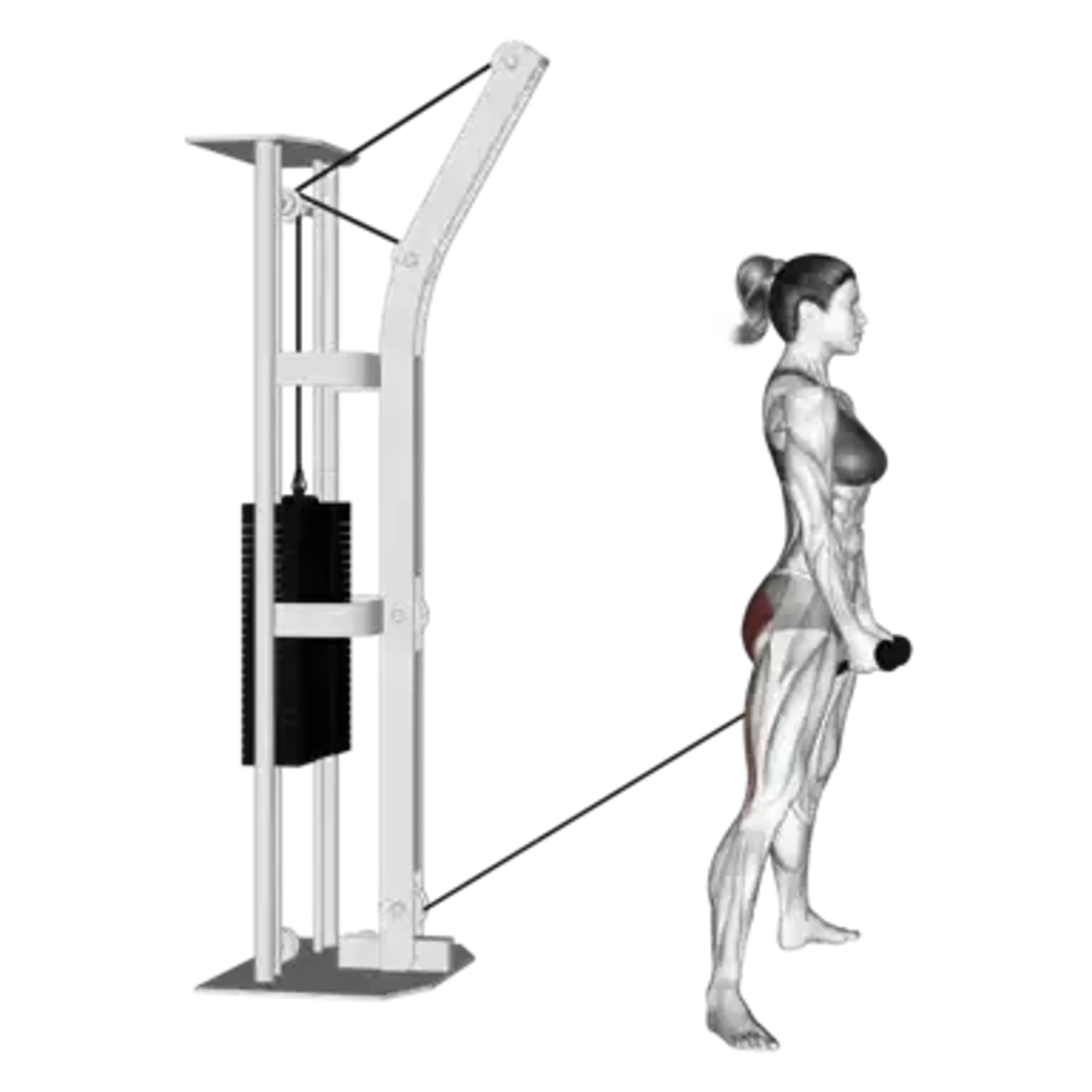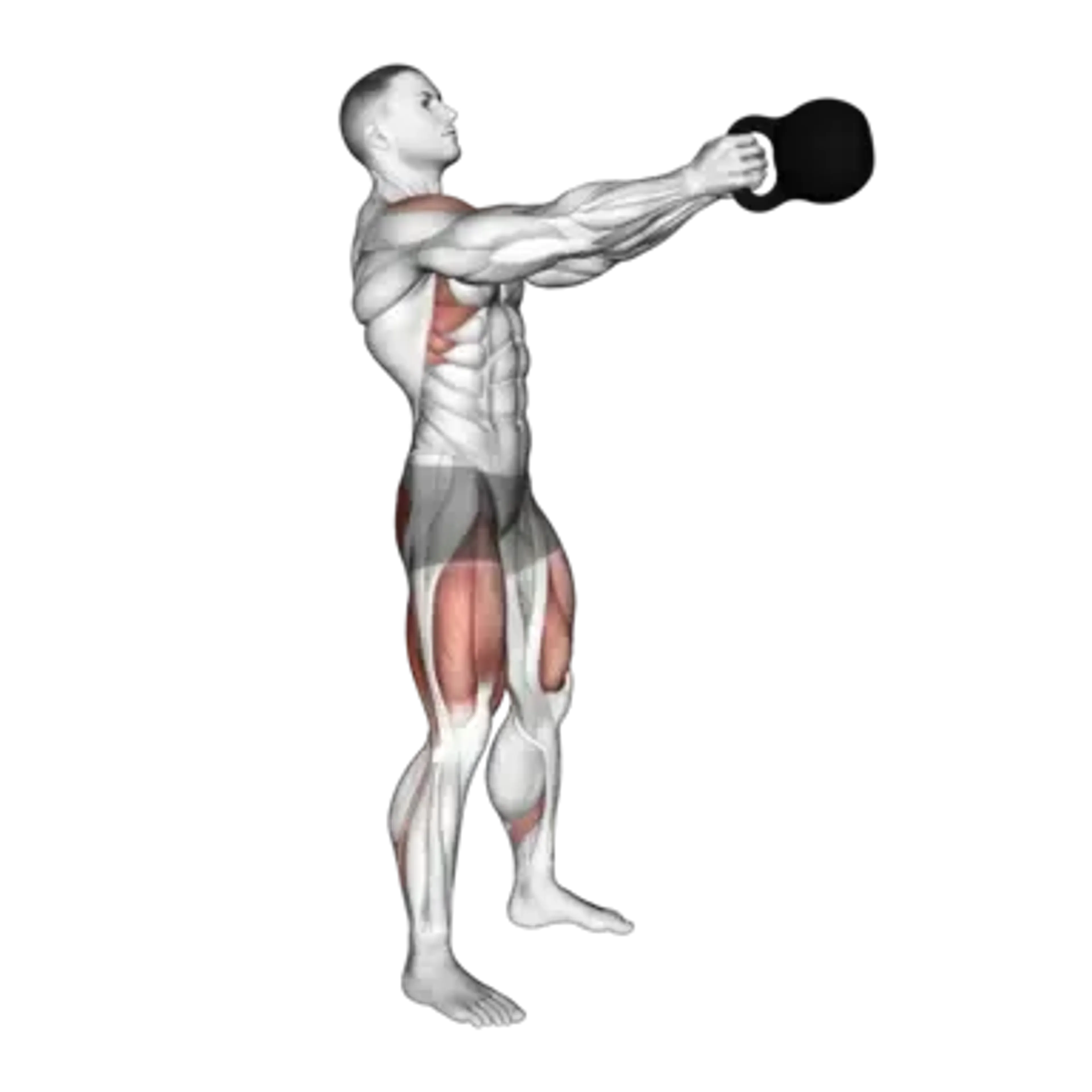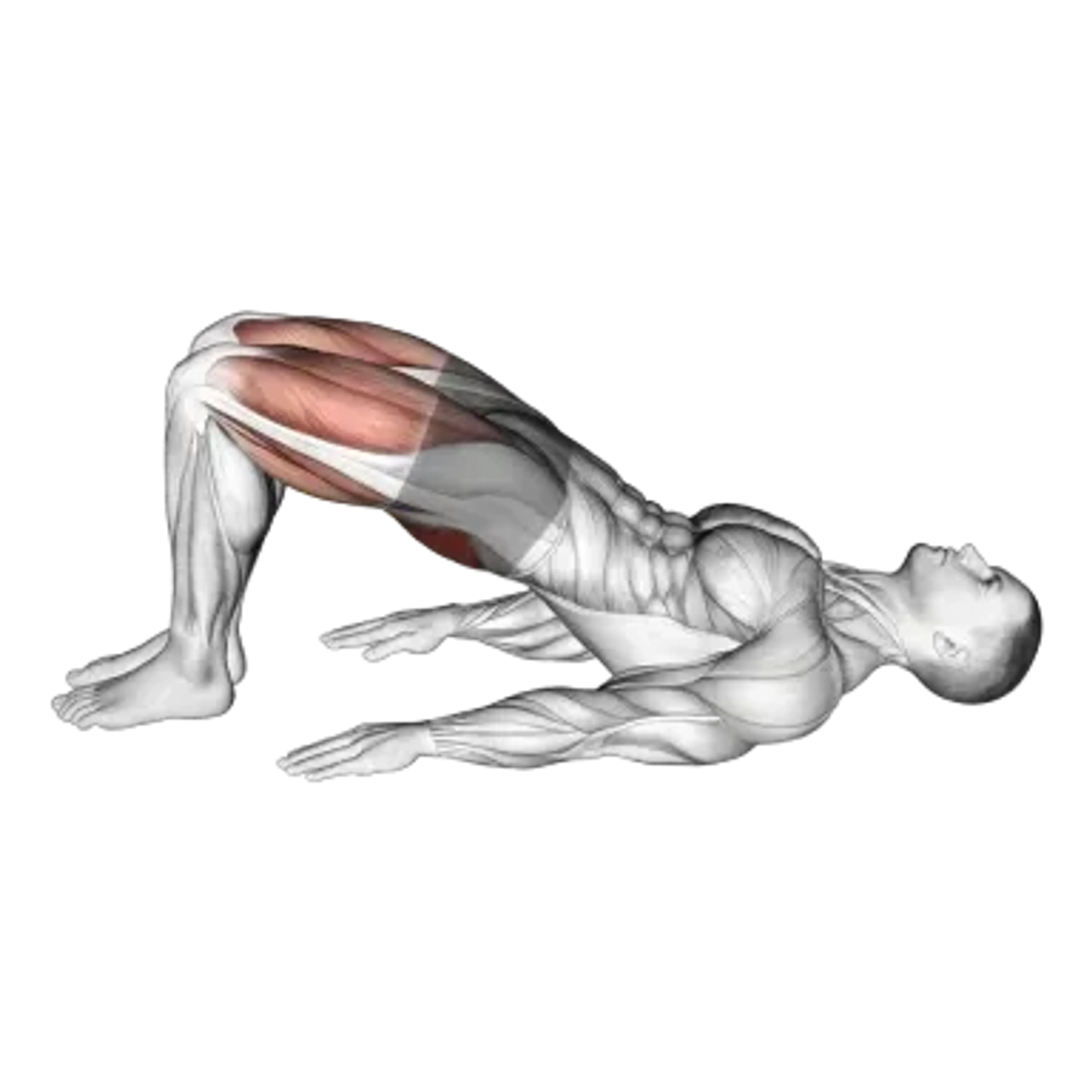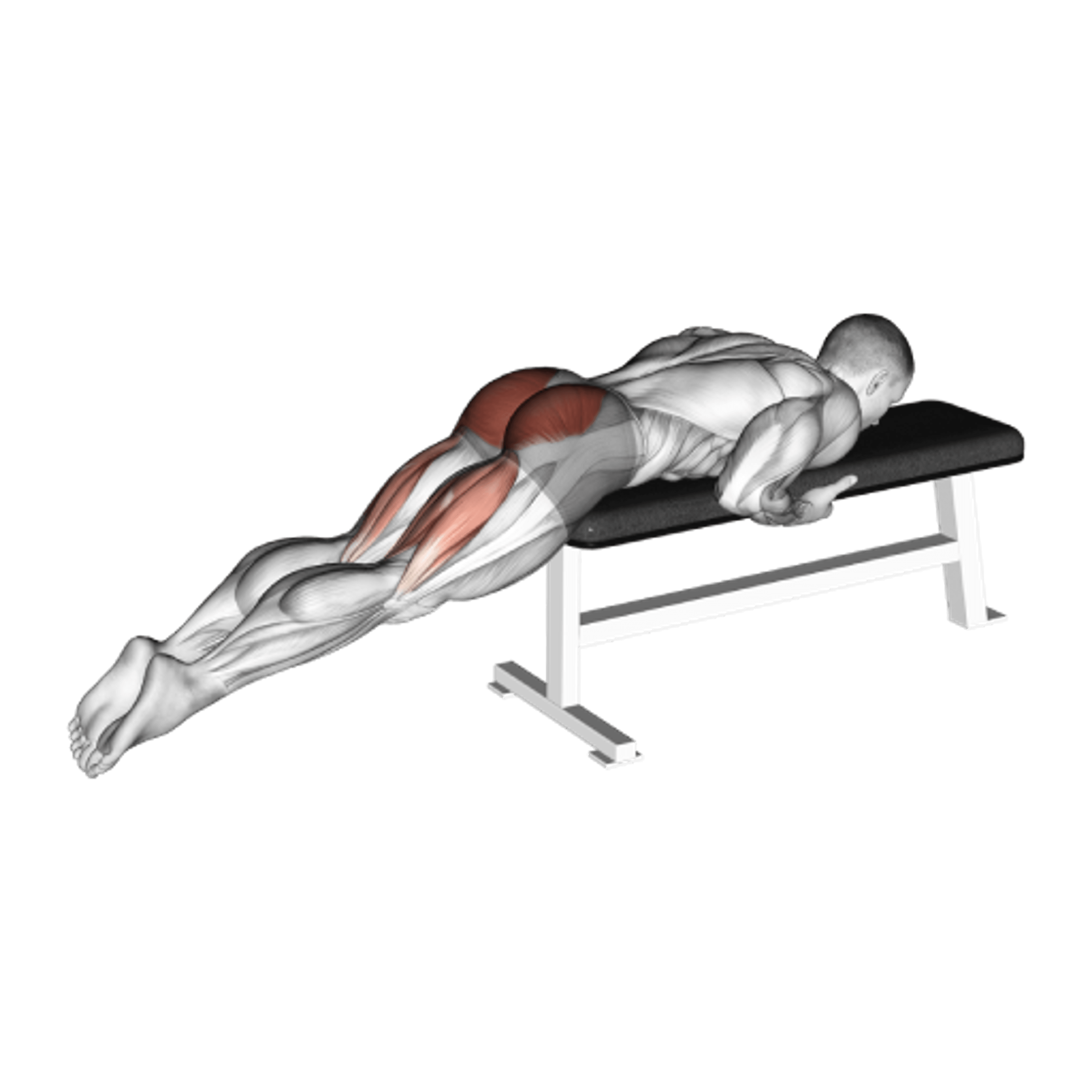Band Pull Through

Overview
- Primary Focus:
- Glutes.
- Equipment:
- Resistance bands.
- Difficulty:
- Beginner.
General Information
Band Pull Through is a compound exercise that primarily targets the glutes while also engaging the hamstrings and lower back. It is a beginner-level movement that teaches a clean hip hinge using accommodating band resistance.
With the band anchored low behind you, tension guides your hips back while you keep the spine neutral. It’s effective for home training and for reinforcing hinge mechanics without heavy external load.
Use controlled reps and a strong top squeeze to emphasize the glutes. Progress by stepping farther from the anchor or selecting a thicker band; tempo and pauses increase difficulty without equipment changes.
Expect a deep stretch in the hamstrings during the hip-back phase and a powerful glute contraction at lockout. Keep the load close to your center by letting the band track between the legs.
Muscles Worked
- Gluteus Maximus
- Primary
- Biceps Femoris
- High
- Semitendinosus
- High
- Adductor Magnus
- Medium
- Gluteus Medius
- Low
- Erector Spinae
- Minimal
Instructions
- Anchor a band low behind you, face away, and thread it between your legs while standing tall with feet hip-width apart.
- Set ribs down and brace; keep a neutral neck and softly unlocked knees throughout the set.
- Hinge by pushing hips back while the band pulls you rearward; let the torso tip forward without rounding the spine.
- Once you feel a strong hamstring stretch, drive the floor away and extend the hips forward to stand tall.
- Squeeze the glutes at lockout without leaning back; pause briefly before the next rep to reset balance.
- Repeat with smooth, controlled cadence, keeping the band path centered between the legs.
Common Mistakes
Injuries
Band Pull Through is a low risk exercise when performed with proper technique.
Rounding the lower back or leaning back at lockout are the most common issues. Maintain a hinge at the hips on the way down and finish with hips under ribs at the top.
If balance is inconsistent, shorten your stance or step slightly closer to the anchor to reduce tension. Build volume slowly and prioritize clean positions over band thickness.
Stop if you feel sharp back pain or hamstring strains; reduce range and tempo, then re-groove the hinge with lighter tension.
Alternative Exercises

Frequently Asked Questions
- Q: What stance width works best for pull throughs?
A hip-width stance suits most people. Adjust slightly wider or narrower to keep balance and maintain a natural hinge path.
- Q: How far should I step from the anchor point?
Far enough to feel steady band tension at the bottom without being pulled off balance. Start closer, then inch forward as technique holds.
- Q: Should I feel my back working?
Your back muscles will stabilize but should not drive the motion. Most of the effort should come from the hips and glutes through the hinge pattern.
- Q: Is this a good alternative to cable pull throughs?
Yes. Band tension differs slightly from a cable, but it effectively trains the hinge, especially in home or minimalist settings.
Overview
- Primary Focus:
- Glutes.
- Equipment:
- Resistance bands.
- Difficulty:
- Beginner.




